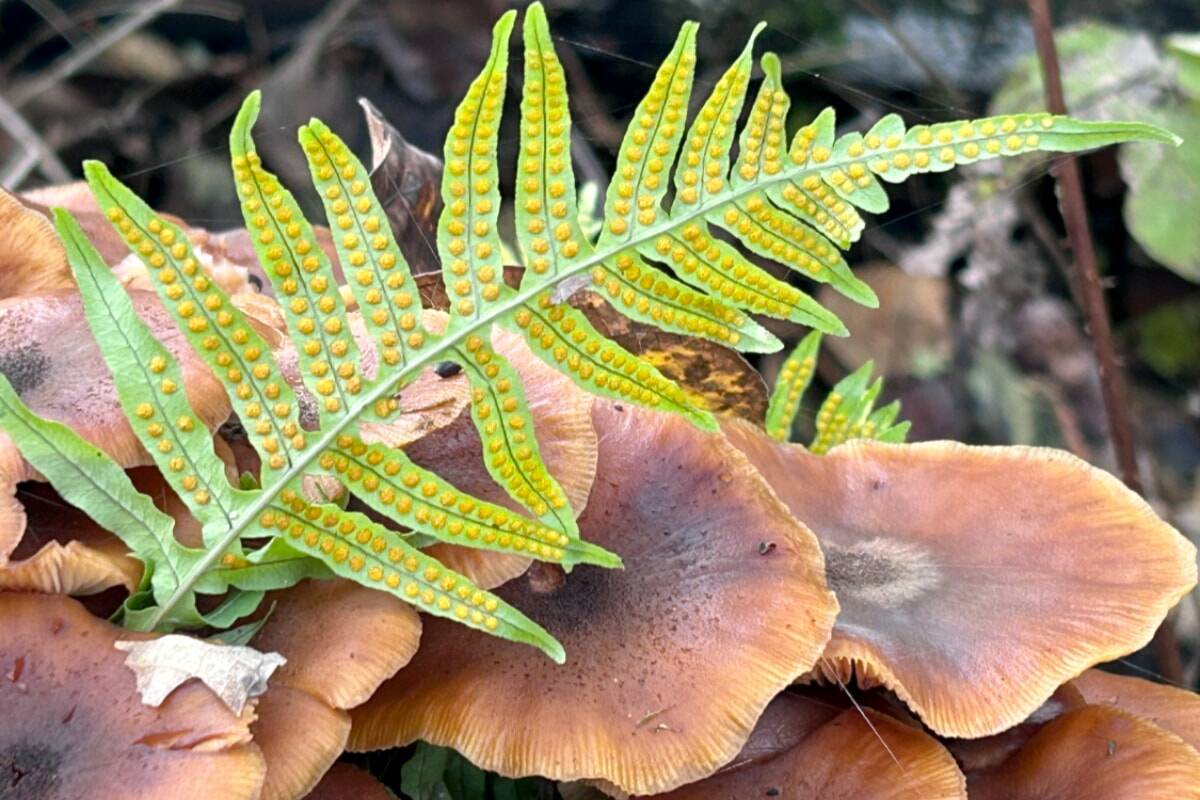An ailing “ubiquitous” plant on Bainbridge Island may be the city’s first-recorded instance of a mysterious disease.
Natural Resources management staff at the BI Metro Parks and Recreation District sounded the alarm about a suspicious patch of ailing sword ferns in Fort Ward Park at the board meeting Feb. 6.
They observed a 30-foot patch of ferns along the main park trail that showed signs of a little-studied disease called sword fern die-off, which native plant researchers suspect to be linked to a fungus that attacks the plants en masse underground.
It’s inconclusive if the Fort Ward ferns are afflicted with the fungus. BIMPRD staff sent a report on the sick plants to the sword fern die-off project at Western Washington University to confirm if it had the disease.
“There are a lot of reasons why sword ferns can possibly die off. A lot of it is dehydration — we’re getting warmer, right? And so we’re losing patches of sword fern,” said Lydia Roush, BIMPRD park services director. “No one’s quite sure why it happens, how it happens, or what it’s associated with. It’s probably climate-change related, but a lot of research is still going on.”
The disease is exactly what it sounds like: native sword ferns suddenly wither and die in an area between 50-400 feet wide, leaving a wasteland of dead fern crowns where few plants of any species are able to thrive. Afflicted plants do not show any lesions or active rot — the only symptoms appear to be a failure to produce fiddleheads in the spring and a decrease in the number of fronds per crown.
So far, at least five places on BI may have shown signs of die-off, all of which are concentrated on the south end of the island: two from 2018 at Islandwood, one from 2019 at Blakely Harbor Park, one from 2020 off of Yama Ridge Lane, close to Fort Ward, and the most-recent one from Jan. 6 in Fort Ward Park. All observations are recorded on the public WWU iNaturalist project cataloging sword fern die-off around the region.
The first state record of sword fern die-off was found near Indianola in 2010, and multiple instances have since been reported around Puget Sound. Most notably, forested areas of Seward Park in Seattle showed a sudden onset of the disease in 2017, and have suffered a significant loss of understory.
Andrew Fraser, stewardship manager of the BI Land Trust, consulted University of Washington botanist Tom Billo about a concerning patch of ferns on land trust property. Killer stress from climate change-induced drought or heat is a possible cause, but the die-offs are recorded in both wet and dry years, explained Billo. However, access to water may still be key.
In 2021, Billo and his team of citizen scientists were able to determine that the disease was not airborne, and likely spread through contact in soil or water. However, they also noticed a pattern: diseased ferns tended to show much less resilience to normal summer dry spells. Where healthy ferns were able to bounce back from drought in summer with first rainfall in autumn, diseased ferns seemed to have lost the mechanism, and were stressed to death.
Observations of diseased patches supported this hypothesis. Frequently, ferns growing near downed logs or wet areas within a die-off radius were much more likely to survive, which suggests that extra soil moisture improved the sword fern’s ability to resist the disease.
Additionally, in 2019, Seattle Parks ecologist Lisa Cieko found that planting mixed native species, mulching and watering them in the summer seemed to work: the sword ferns had a 100% survival rate.
Fraser said BILT has heeded Billo’s advice. The organization has avoided making trails through suspected die-off patches and started to “encourage the accumulation of large woody debris” on sites, which has seemed to help, he said.
“Large woody debris effectively act as sponges, storing moisture in the winter months and slowly releasing it in the summer months,” Fraser said. “Increasing the local humidity and soil moisture levels in the summer months is super important for our native plants.”
Sword ferns are not remotely endangered. They are “ubiquitous” in BI parks and many people’s yards, Roush said.
“Because there’s so much research going into it right now, we’re just kind of waiting and monitoring and looking for best practices to emerge. Our mitigation practices for now are identifying spots where we think we might have it, monitoring those spots, watching for spread,” Roush said.



